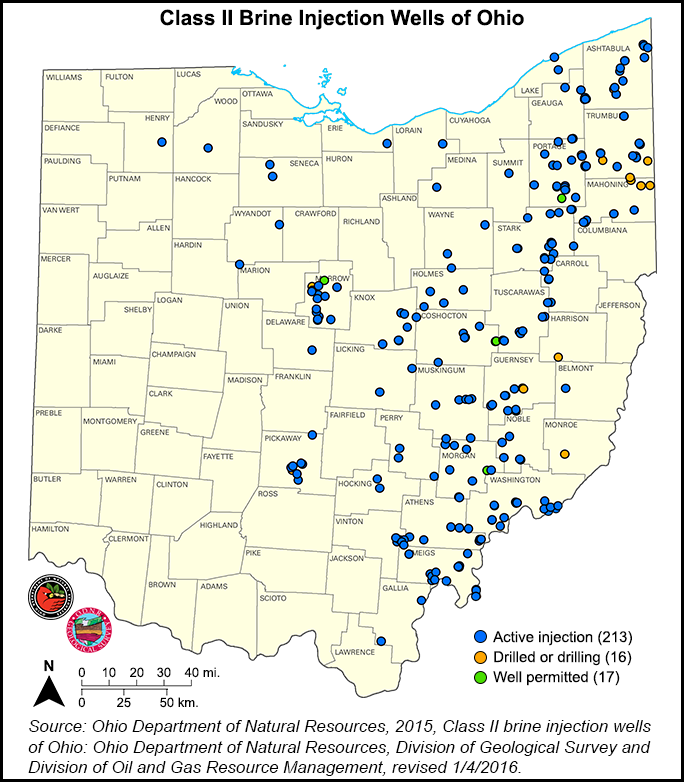Utica Shale | NGI All News Access
Lawmakers Propose New Restrictions on Ohio Injection Wells
A recent bill introduced by Ohio lawmakers aims to tighten regulations on the state’s underground injection wells that accept waste from oil and gas-related activity.

HB 422, sponsored by Democratic Reps. Sean O’Brien and John Patterson, proposes a number of revisions to the state’s existing oil and gas regulations, mostly related to oversight of injection wells and the transportation and storage of liquid waste.
Among other things, the legislation would place new restrictions on where injection wells could be located, requiring that they be set back at least 2,000 feet from any occupied dwelling or body of water, including streams and water wells.
The bill would also require trucks transporting brine to be tracked using a GPS system.
The bill’s sponsors described the legislation as an effort to safeguard the public without impeding development of Ohio’s oil and gas resources.
“Ohio hasn’t kept pace with the public safety demands stemming from a rapidly developing industry,” O’Brien said. “This law would modernize the way we do business in Ohio to strike the right balance between corporate profits and protecting people.”
“The growing shale industry has brought new economic opportunities to Ohio, but with that opportunity comes the responsibility to keep people and communities safe,” Patterson added. “This legislation will provide necessary safeguards that balance the safety of our communities with the continued expansion of this burgeoning industry.”
The lawmakers said they’re hopeful that the bill can pass through Ohio’s Republican-controlled legislature.
Recent data showed the state’s injection wells, through the first nine months of 2015, had accepted near-record levels of drilling waste (see Shale Daily, Dec. 16, 2015).
Ohio injection wells have come under scrutiny in recent years, with the state investigating two wells in Trumbull County for possible links to seismic activity (see Shale Daily, March 17, 2015; Sept. 22, 2014; Sept. 2, 2014). Elected officials in Trumbull County later asked Gov. John Kasich to issue a moratorium on new injection wells (see Shale Daily, June 24, 2015).
The Environmental Protection Agency recently gave the Ohio Department of Natural Resources favorable marks for its administration of its Class II Underground Injection Control program (see Shale Daily, Sept. 18, 2015).
In neighboring West Virginia, Fayette County recently passed the state’s first county-wide ban on underground injection wells, a move that stemmed from a controversial injection well operated by a company in Lochgelly, WV (see Shale Daily, Jan. 13).
Shawn Bennett, executive vice president of the Ohio Oil and Gas Association, criticized the proposed bill. Bennett said the trade group understands that the bill is an effort to respond to concerned constituents but described the legislation as “unnecessary considering Ohio’s recent favorable audit” by EPA “regarding its Class II injection well program.”
Bennett added that the “provisions that would require injection wells be placed [at least] 2,000 feet from basically anything shows the true goal of the legislation is to halt an integral function of the oil and gas industry in the state.”
© 2024 Natural Gas Intelligence. All rights reserved.
ISSN © 2577-9877 | ISSN © 2158-8023 |
